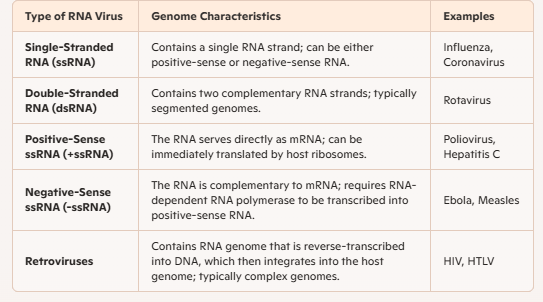Introduction to RNA Viruses
RNA viruses are a broad category of pathogens distinguished by the ribonucleic acid (RNA) that makes up their genetic material. RNA viruses use RNA to encode their genetic material, in contrast to DNA viruses, which contain deoxyribonucleic acid (DNA). Their interaction with host cells, rates of mutation, and replication are all greatly impacted by this essential distinction.
Types and Examples of RNA Viruses
RNA viruses are classified into several (47) families, each with unique traits. Some of the well-known categories include the Orthomyxoviridae family, which contains the HIV (Human influenza virus), and the Retroviridae family, which is home to the HIV (human immunodeficiency virus). Each family of RNA viruses possesses distinct replication strategies and disease associations, which pose various challenges to public health.
Key Features of RNA Viruses
Genome Characteristics of RNA Viruses
The Impact of RNA Viruses on Human Health
The impact of RNA viruses on human health is profound. They are responsible for a range of diseases, from the common cold to significant outbreaks like Zika and COVID-19. Understanding the biology and mutation patterns of these viruses is crucial for developing effective vaccines and treatment options. Public health measures aimed at controlling RNA virus transmission remain essential in the fight against viral pandemics.






